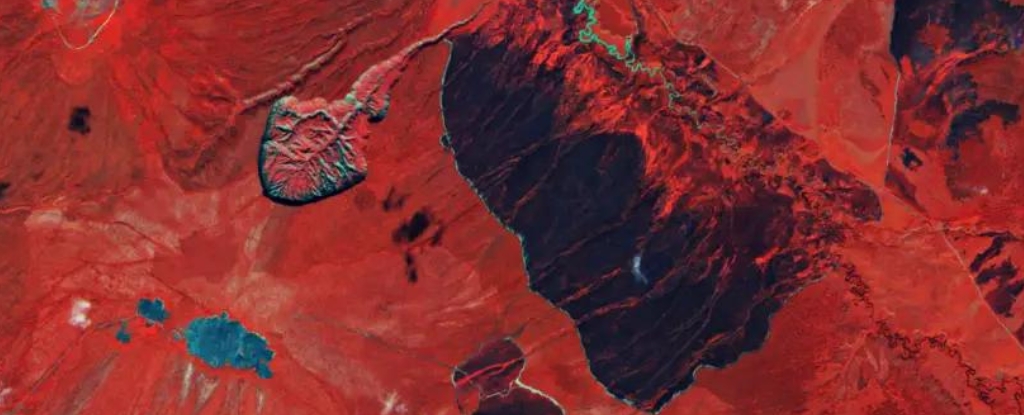A giant hole in the earth is breaking open the land in Siberia, and photos from space show it’s growing rapidly.
It’s the shape of a stingray, a horseshoe crab, or a giant tadpole. It started as a sliver, barely visible in declassified satellite imagery from the 1960s.
Now it’s a chasm with steep cliffs, clearly visible from space.
The hole tripled in size between 1991 and 2018, according to the US Geological Survey.
The Batagay crater, sometimes referred to as Batagaika or as the “gateway to hell,” is representative of a much larger, often invisible problem that affects the entire planet.
What is this hole in Siberia?
The Arctic is heating up faster than the rest of Earth, and that’s quickly thawing the permafrost, which is a thick layer of soil that’s permanently frozen – at least, it used to be.
The Batagay crater isn’t actually a crater at all. It’s the world’s largest “retrogressive thaw slump,” which is a pit that forms when permafrost thaw causes the ground to cave in, creating a landslide as the earth at its edges slumps into the pit.
There are thousands of thaw slumps across the Arctic. But the size of the Batagay “crater” has earned it the title of megaslump. It’s named for the nearby town of Batagay.
“Permafrost is not the most, let’s say, photogenic of subjects,” Roger Michaelides, a geophysicist at Washington University in St. Louis, told Business Insider.
“You’re talking mostly about frozen dirt underground, which by definition you often can’t see unless it’s been exposed somehow, like in this megaslump.”
That makes the Batagay pit a bit of a permafrost celebrity and an omen of what lies ahead.
The Batagay megaslump could help decode our planet’s future
As permafrost thaws, all the dead plants and animals that have been frozen inside it for centuries start to decompose, belching carbon dioxide and methane into the atmosphere.
Those are powerful heat-trapping gases, which cause global temperatures to rise even more, triggering even faster permafrost thaw.
This vicious cycle could have dire effects. Permafrost covers 15% of the land in the Northern Hemisphere. In total, it contains twice as much carbon as the atmosphere.
One study estimated that permafrost thaw could emit as much planet-warming gases as a large industrial nation by 2100, if industries and countries don’t aggressively reign in their own emissions today.
“There’s a lot we don’t know about this feedback loop and how it will play out necessarily, but the potential is there for very large changes to the climate system occurring over very, very fast geologic timescales,” Michaelides said.
In short, permafrost thaw could quickly make the climate crisis much worse. But it’s still a mysterious process. Studying extreme sites like the Batagay megaslump can help scientists understand permafrost thaw and peer into the future.
In a study published in the journal Geomorphology in June, researchers used satellite and drone data to construct 3D models of the megaslump and calculate its expansion over time.
They found that about 14 Pyramids of Giza’s worth of ice and permafrost had thawed at Batagay. The crater’s volume increases by about one million cubic meters every year.
“These values are truly impressive,” Alexander Kizyakov, the study’s lead author and a scientist at Lomonosov Moscow State University, told BI in an email.
“Our results demonstrate how quickly permafrost degradation occurs,” he added.
The researchers also calculated that the megaslump releases about 4,000 to 5,000 tons of carbon each year. That’s about as much as the annual emissions from 1,700 to 2,100 US homes’ energy use.
Michaelides said those numbers didn’t surprise him, but they can help inform models of future permafrost thaw and emissions.
“I think there is a lot we can learn from Batagaika, not only in terms of understanding how Batagaika will evolve with time, but also how similar features might develop and evolve over the Arctic,” Michaelides said.
“Even if they’re a tenth or a hundredth the size of Batagaika, the physics is fundamentally the same.”
This article was originally published by Business Insider.
More from Business Insider:





